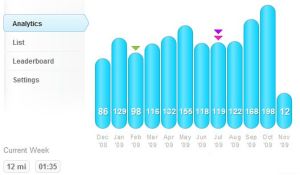![]()
flickr image by foreversouls
My next race, the California International Marathon in Sacramento, is less than two weeks away, and I’m starting to get anxious and excited about running it. Training-wise I’m transitioning from my slightly unorthodox regimen of running blocks of long distance to a more traditional taper. And, since I believe tapering before a big race is so important, I’m putting my trust back into the hands of runners who know a lot more than I do about the sport. In spite of ignoring the marathon training plan I’ve used in the past during the run-up to CIM, I’m now turning to it as I start tapering.
I’ve said before I wanted to “shake up my routine” and break away from a strict training regimen while prepping for CIM, but these two weeks prior to the marathon are vital to race day success, and they aren’t a good time to start experimenting with running routines. In fact, some of the fatigue and stiffness I’ve experienced in the latter halves of my running weeks have prodded me to reconsider my views on the importance of tapering. I’m happy with the distance training I’ve engaged in for the past few weeks, and I believe it’s helped make me a stronger and more confident runner. But I don’t think running 50 mile weeks right before a marathon is a good idea. Conversely, I don’t know how little I should be running. So, I’m returning to the advice of experts and following the mileage suggestions from my trusty marathon training schedule.
I’ll follow the training schedule as closely as I can, and over the next two weeks I’ll be trading the physical aches and pains of getting in a lot of mileage for the mental stress of the taper. I’ll have to resist the urge to run when I shouldn’t along with the growing sense of impending failure which can creep up because, “You aren’t running enough!” Running as a sport has a huge mental component, and this tapering period is helping me realize my race begins well before I get to the starting line.
What do you think? Comments always welcome.





































